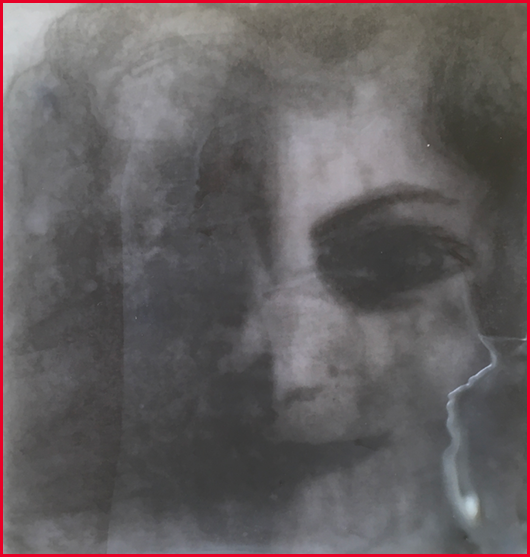
Pyjama Girl could be the ultimate Trophy Head. A young woman was murdered, and for the last eighty years, she has been labelled by what she was wearing: her Chinese yellow silk pyjamas.
The Pyjama Girl case starts outside of Albury in 1934 where a young woman is bashed, shot, dumped with a bag on her head and then set on fire. She remained unidentified. She was stored in a bath. Her already damaged face was distorted again with artist impressions and published including in the new technology: the colour magazine. Mum told me stories about reading these magazine articles avidly at the time.
The Pyjama Girl became Linda Agostini and her husband was tried and later deported. There is uncertainty about the identification and the conviction.
The lines and borders of this case wrapped around the community linking across the country using the mechanism of Press. Over time our need to map her to our values made her as big as Phar Lap and Ned Kelly, and like them, a subject of an awkward movie.
Respect to Linda Agostini, Anna Philomena Morgan and the Pyjama Girl
Ars
‘Trophy Heads’ is a series of processed drawings set in wax. The drawings are based on an image significant to the Head and then worked up in graphite and charcoal on Chinese rice paper. Drawings were soaked in wax to create a skin. These drawings were layered on top of each other and then photocopied and soaked in wax. This process was repeated several times with a final dip into wax. The monoprints were framed in black and displayed on the wall.
Wax is a component of lipsticks and charcoal used as eye liner by the Egyptians. Layer up graphite and rice paper links to ancient practices of art.
The images were taken from Social Fabric my response to making a mask during 2020 lockdown. The spilt faces were already manipulated by the police artists in the 1930s and then by me with the PerfectMe app.
The lines of Trophy Heads map to Marilyn Diptych (1962) by Andy Warhol and his preoccupation with celebrity beauty and consumption and mapping them to religious icons. Another boundary crossed was appropriation and copyright where Warhol was sued not by Marilyn or her estate but by the owner of “Niagara” film stills.
I realise my work is complicit in trapping these people in a moment.
Trophy Heads
We place people on pedestals and on spikes.
“Trophy Heads” is a series of works that takes its leave from the human preoccupation with taking and displaying others to serve a purpose: the Shuar blocking a vengeful spirit by severing their enemies’ heads and shrinking them, Khaled al-Asaad’s murder by ISIS to many a head put on a spike.
I dug into my preoccupations to explore the nature of celebrity and how we need to make them Trophy Heads or to put a line around it.
Vermillion Borders
Flesh, rock, lip, sea.
Vermillion Borders maps our emotional cartography. A vermillion border is the line around your lips separating skin and lip. What is outside of the line? What is contained inside the border?
Linda explores our relationship with the land through surreal landscapes, where my arts practice is based on ways of communication and complexity in life. Their practices use ink, watercolour and graphite on paper (both), digital and encaustic (Fiona), and oils and text (Linda). Vermillion Borders is a series of mixed media works unified by a limited colour palette of red, black and white and careful curation. The works were generated by one artist producing a starting point and sending it to the other to complete: creating a true integration of both artist’s practice. The stages were completed in isolation so that each cannot influence the other’s response to the original.
The works were mapped to gallery space at Alternating Current Art Space to fit into the walls, ceiling beams and the energy flow to and from other shows.
“A map tells you where you’ve been, where you are, and where you’re going — in a sense it’s three tenses in one.”
Peter Greenaway